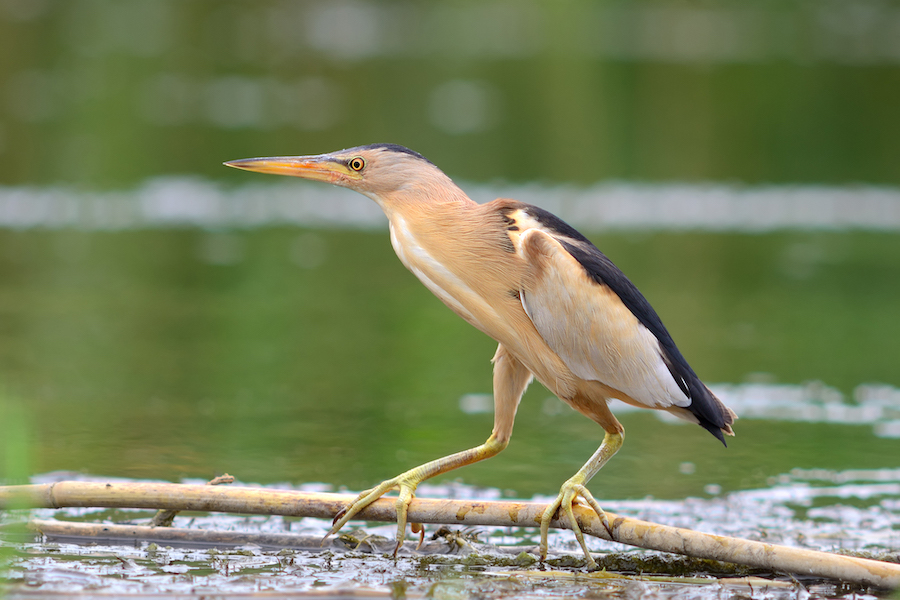A new migratory bird has found its way to the Japanese Garden in Monaco, discovered almost by accident during a yearly reptile and amphibian check.
There’s a new bird in town! Called the little bittern, or Ixobrychus minutus for budding ornithologists, it is considered the smallest heron in Europe… and one of the cutest. It ranges from 33 to 38 centimetres high, has a wingspan of 52 to 58 centimetres, and is characterised by its long, sharp beak and thickset neck.
The male has black plumage with a greenish tinge from the top of its head to the top of the tail. The sides of its head and neck are a pale yellow and it has two barely noticeable white stripes.
The female has a black cap with brown edges. Its back and shoulders are a rich chocolate brown with yellow borders. The neck displays markings in brown as well and the flanks are streaked with dark brown.
It was spotted during a routine check by the Department of the Environment in late May of amphibians and reptiles in the Japanese Garden, and is the first time it has ever been observed in the Principality.
Despite being new to Monaco, the bird is not uncommon in the region, as it migrates up from Africa for the summer months, before heading back to warmer climes for winter.
Its arrival, and subsequent decision to stay put in the Japanese Garden, is being chalked up to the humidity levels coupled with the abundance of food available. The little bittern eats insects and frogs, of which there are plenty in the garden. Additionally, as the gardens are closed at night, the bird can get the privacy it needs to rest and hunt.
The little bittern is widespread throughout southern and central Europe, North Africa, and Western Asia. The studies carried out on this species show a very strong drop in numbers throughout Europe due to the disappearance or modification of their habitats and traditional staging grounds. A threatened species at the European level, it has been listed in Annex 1 of the European Bird Directive.
Photo of the Little Bittern – Ixobrychus minutus, source: Shutterstock
